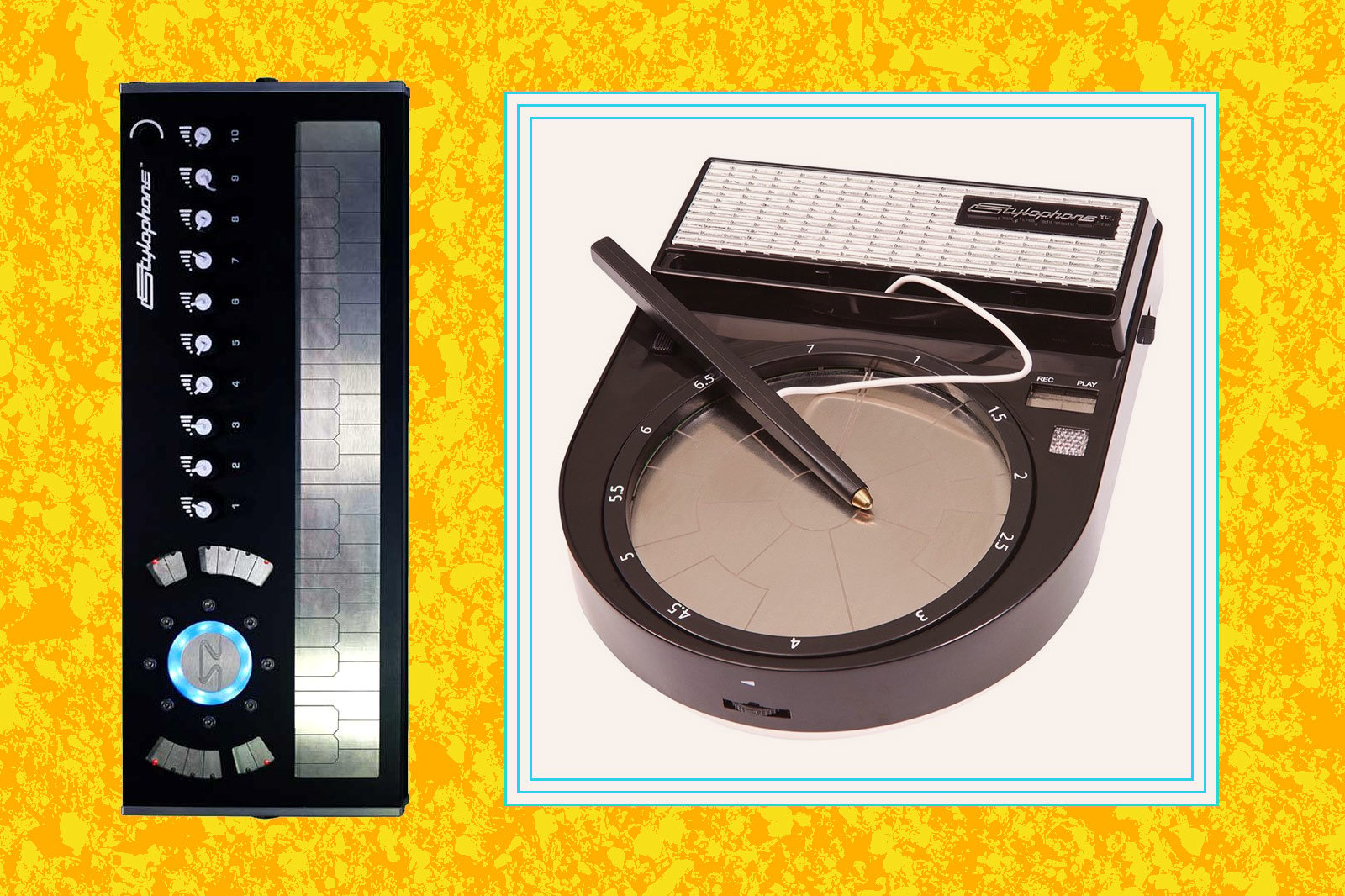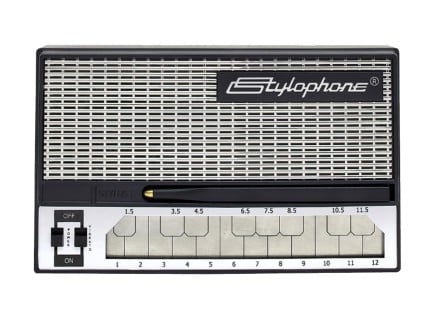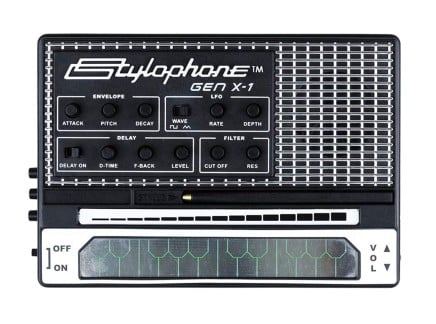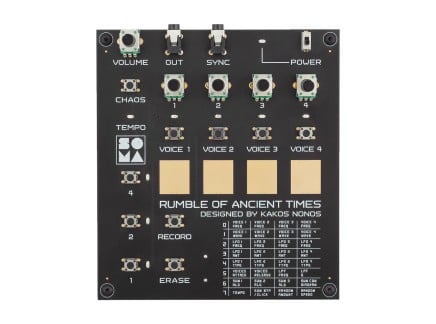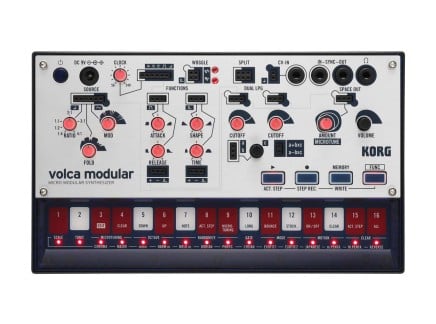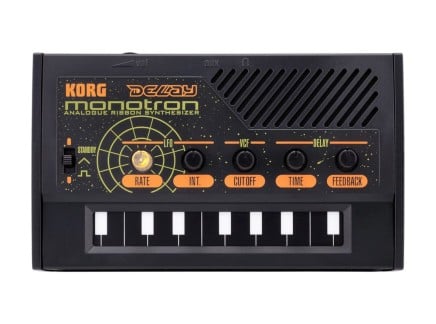The Stylophone is probably one of the world’s most well-known (and perhaps maligned) novelty electronic instruments. Conceived back in 1968 by a guy called Brian Jarvis, the story goes that he came up with the idea while repairing a toy piano for his niece. British company Dubreq began to produce them shortly thereafter, going on to sell millions of units. The fact that everybody from Kraftwerk to Bowie, and even Lennon have used them at some point in their careers probably hasn’t hurt…but the question remains: how on Earth did such a limited device end up becoming a cult classic?
A couple of months ago I decided it was high time that I paid a bit more attention to this piece of electronic music history, and picked up a reproduction of both the original design (the S1), and also a newer incarnation, the Gen X-1. Despite the instrument’s ubiquity and affordability, I hadn’t actually ever tried one out for myself before now. Well, not in the last 20 years anyway. I do have a very foggy recollection of messing around with a half-broken bit of plastic that was found at the bottom of a box at a friend’s house that made funny squealing noises, which may or may not have been a Stylophone, but I can’t really be sure, and as far as I’m concerned, that kind of childhood memory only helps to reinforce their enduring presence in pop-culture; the idea that they’ve just always kind of been there—something that makes it easy to take them for granted.
The Early Years
For those of you that might not have come across one before, the general concept and feature-set of the Stylophone is very straightforward. It is a portable, battery-operated electronic instrument (I hesitate to call it a synthesizer) which has a built-in speaker. Its notes are laid out on a thin metal strip, which you play using a built-in stylus (hence the name). There is no polyphony, no MIDI (well, not usually), and definitely no after-touch. This is about as simple as it gets.
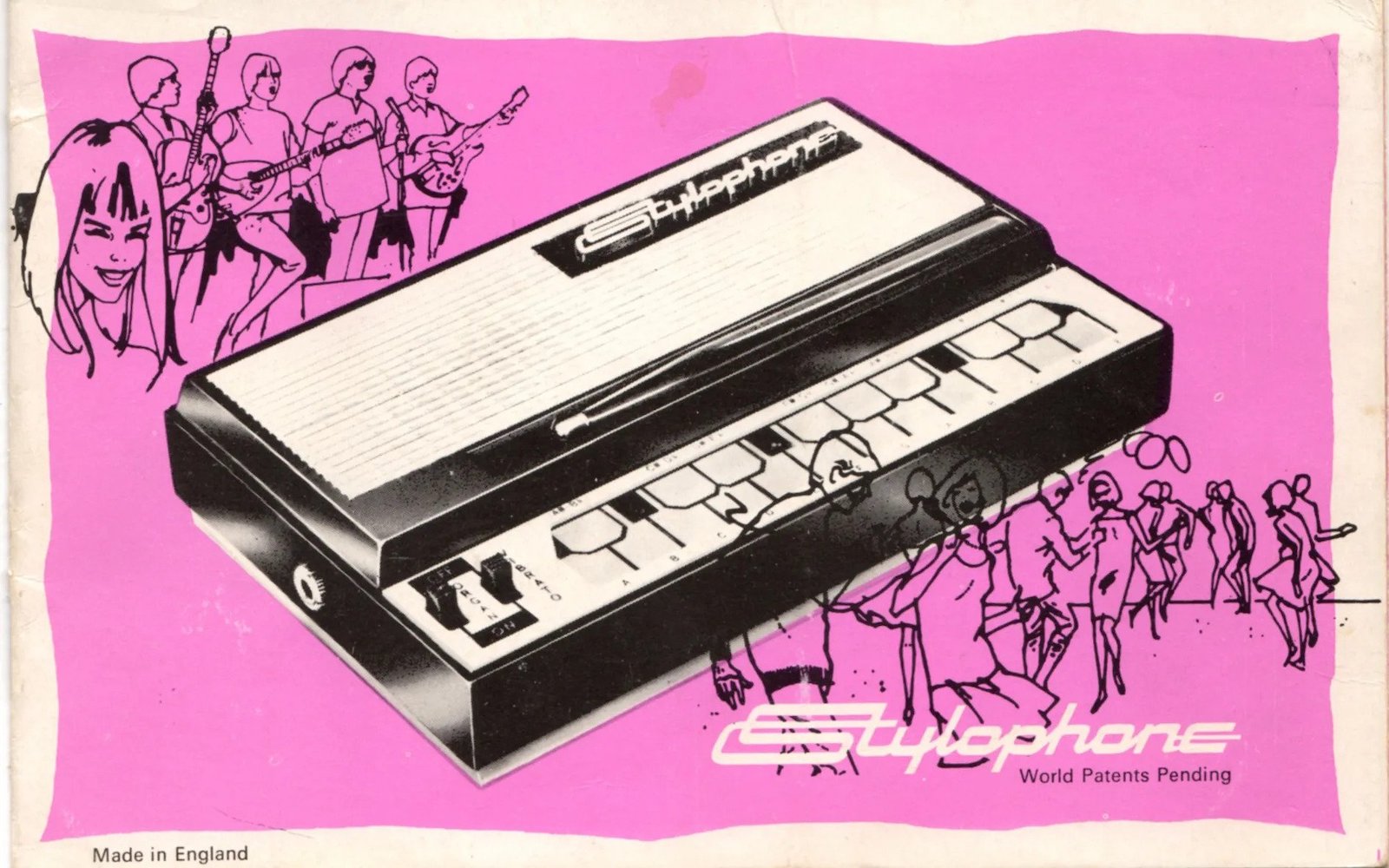
It would be fair to say that while the sound of the Stylophone is arguably distinctive, it is also rather divisive, with a thin buzzing, reminiscent of an angry bee. It might be difficult to imagine how such a thing could be used in any real kind of musical fashion, but unusual instruments have often provided the key for artists to unlock inspiration, and create classics in the process—so don’t be so quick to judge.
The fundamental notion underpinning the Stylophone was that a simple instrument could be created cheaply by using the innate properties of the circuit board, allowing touch sensitivity—and as a result of its design, it was both portable and affordable.
Those are two attributes that cannot be applied to its successor, the 350s. This was a monstrous device in comparison, with a much larger ‘keyboard’, and a variety of different voices, including approximations of "woodwind" and "brass" sounds. Perhaps unsurprisingly, this was not as big a commercial success, probably because of its size and cost—though they do appear fairly regularly on eBay.
S-1: The Revival
Like any great dynasty, the Stylophone has evolved over time, with a number of variations on the original idea. Part of this is down to Ben Jarvis, son of the original inventor, who reformed Dubreq in 2007 to restart production of the device after a prolonged manufacturing hiatus.
This "Stylophone Revival" began with the release of the S-1, which is effectively a modern take on the classic, complete with the addition of some extra features. These include an audio output, three-way tone switch, and the all-important volume knob(!). This is now the de facto default Stylophone on the market (with the caveat that there were some additional updates to its design in 2020).
When I went hunting for my own, I was pleased to discover that if you buy one of these brand new today, they come in retro packaging that gives a nod to their legacy. A nice touch. The legend lives on.
S-2: The Space Oddity
Following on from the S-1, Dubreq began to branch out, with the announcement of a rather unusual device in 2013 called the S-2. This was something of a departure from the OG in the sense that it was a more mature electronic instrument, as opposed to a simple, noise-making toy.

It boasted a sleek new design, which was housed in a steel enclosure, and while the recognizable metal strip was still present, you were able to play it with your fingers for the first time. If you preferred to stick with the more traditional method, you could do so with the all new "wireless" stylus (though I suspect any pointy thing would do).
As a dual filter, two-oscillator analog synthesizer with built-in effects, the S-2 was capable of producing some seriously meaty sounds, and did so while retaining the spirit of the original...right down to being battery powered. I love the look of this thing, but unfortunately, they never really took off. Part of the reason for this could be the lack of MIDI connectivity. Either way, they are rather difficult to come by these days, and command collector’s prices.
Gen X-1
Released in 2017, the Gen X-1 went back to basics, with an updated (and slightly larger) version of the original Stylophone.
While it didn’t quite reach for the heights of the S-2, it included a bunch of additional features, such as the introduction of switchable sub-oscillators, an envelope, LFO, low-pass filter, delay, and even something like pulse width modulation (presumably just in an attempt to satisfy Nick Batt). It also features a continuous pitch ribbon in addition to the typical stylus-activated keyboard, allowing for gliding tones similar to a theremin—which, in combination with the built-in delay is a sure way to generate all manner of sci-fi-inspired tones and textures.
There is also an aux input, which allows you to apply its various sound-sculpting tools to external signals. In many ways, the Gen X-1 is kind of like a more fully featured Korg Monotron; favored choice of battery powered DAWless jammers everywhere.
Gen R-8
Another one of the more intriguing models in the Stylophone range comes in the form of the Gen R-8, which was released in 2019. Building upon the concepts of the ill-fated S2, this was again a much more "serious" instrument.
Inside its steel case, it boasted an all analog signal path, built-in step sequencer, and a variety of waveforms. MIDI connectivity was included for the first time, meaning that you could use the R-8’s contact plate as a controller, and there was even 19 patch points for semi-modular capabilities. Its quirky operation and gritty sonic character remind me of the original EDP WASP, albeit (presumably) with a higher quality construction. These were limited edition, and now relatively rare.
Stylophone Beat
Just a couple of months ago, Dubreq came out with the Stylophone Beat. As you can probably guess from the name, this is a drum machine, which builds on the basic operational principles that Stylophone have come to be known for. Namely, that you trigger sounds through the use of a stylus, making contact with a metal plate.
Interestingly enough, Beat isn’t their first venture into the world of percussion, having been preceded by the earlier "Beatbox." The practicalities of producing usable rhythms from such a device are questionable, though the addition of a click track should make things a bit more manageable, and there’s also a "bass synthesizer" in there as well. While functionally limited, it isn’t actually all that bad, given the price.
The original Stylophone Beatbox is a staple part of a surprisingly ubiquitous genre of YouTube videos, centered around multi-tracking stylophones to create elaborate arrangements of classic songs. (Have you seen that crazy Metallica cover???) We expect that, in time, the Stylophone Beat will join the Beatbox in the ranks of "secret weapon" affordable sound-making machines.
The Stylophone Experience
There is no escaping the fact that at its core, the Stylophone is an incredibly basic instrument, and to be fair, it doesn’t really pretend to be anything else. Despite this, you often find seemingly bewildered individuals dismissing it as nothing more than a toy. However, it can also sound incredible in the right hands. If you take more than a cursory glance through YouTube, it quickly becomes clear that it is possible to do some pretty amazing things with the Stylophone—if you practice, anyway. As mentioned above, dedicated souls have documented their skills in recreating all sorts of musical classics, with bewildering speed and dexterity.
Personally, I am far too lazy and inept to achieve the dizzying heights of such mastery, but luckily, you don’t really need to go that far to get interesting results. Part of the fun of the thing lies in experimentation, and exploring its clear limitations. There are all sorts of unorthodox examples of this out there to highlight the possibilities, including using the CV output of a Korg SQ-1 as a sequencer, by touching the end of the stylus to a patch cable. The first time I saw that, it genuinely blew my tiny mind. Why don’t they add a dedicated CV input jack!?

For my part, I mostly enjoyed using the OG for simple lead lines, slathering the output in different effects, and finding myself pleasantly surprised with the outcome (what doesn’t sound good drowned in reverb?). Have a listen to "Style" by Orbital from 1999 for an excellent example of this in practice, and see if you can pick out the Stylophone. I’ll wait. For its part, the Gen X-1 has proven to be a fun noise machine, lending itself perfectly to the production of "ear candy," providing wild stabs, square wave woops, and modulated trills galore.
The nature of the metal contact strip in the Stylophone means that you have to approach melody composition differently from a traditional keyboard, and it makes sliding between notes almost a requirement at times. Hand-eye coordination is key here, even if you opt for the more staccato, tapping technique (which I have failed to perfect). I am a big believer in the idea that changing up the type of input device you are using can help you create music that you never would otherwise, and the Stylophone definitely forces a shift in perspective.
Summary
To many, the Stylophone may be nothing more than a squealing kids' toy—a stocking filler of little consequence. However, I think there’s actually probably a bit more to it than that. While they undeniably make for affordable gifts and a great introduction to electronic instruments for the youths, that isn’t the extent of their appeal.
The simple concept at the heart of Stylophone speaks to that part of every musician that likes to play with sound, and do so in a tactile manner. We can see evidence of this kind of interface in contemporary instrument design too. Arturia’s MicroFreak is well known for its use of a capacitive keyboard—something that despite being well established, still feels relatively novel.
It can be easy to sniff at the humble Stylophone, but throughout history people have found inspiration in far more unusual places. Considering this, alongside the consistently low cost of entry, it seems like the Stylophone has both earned its place, and is here to stay.

